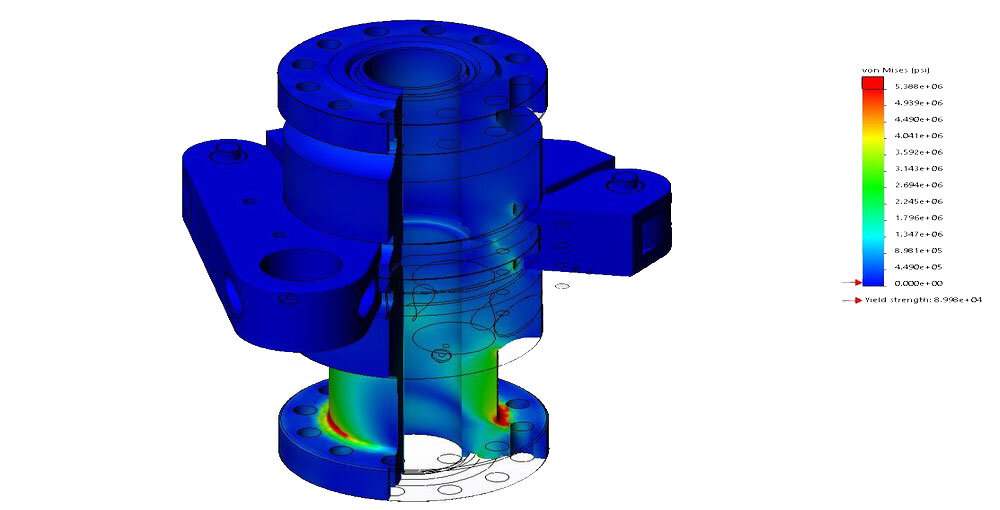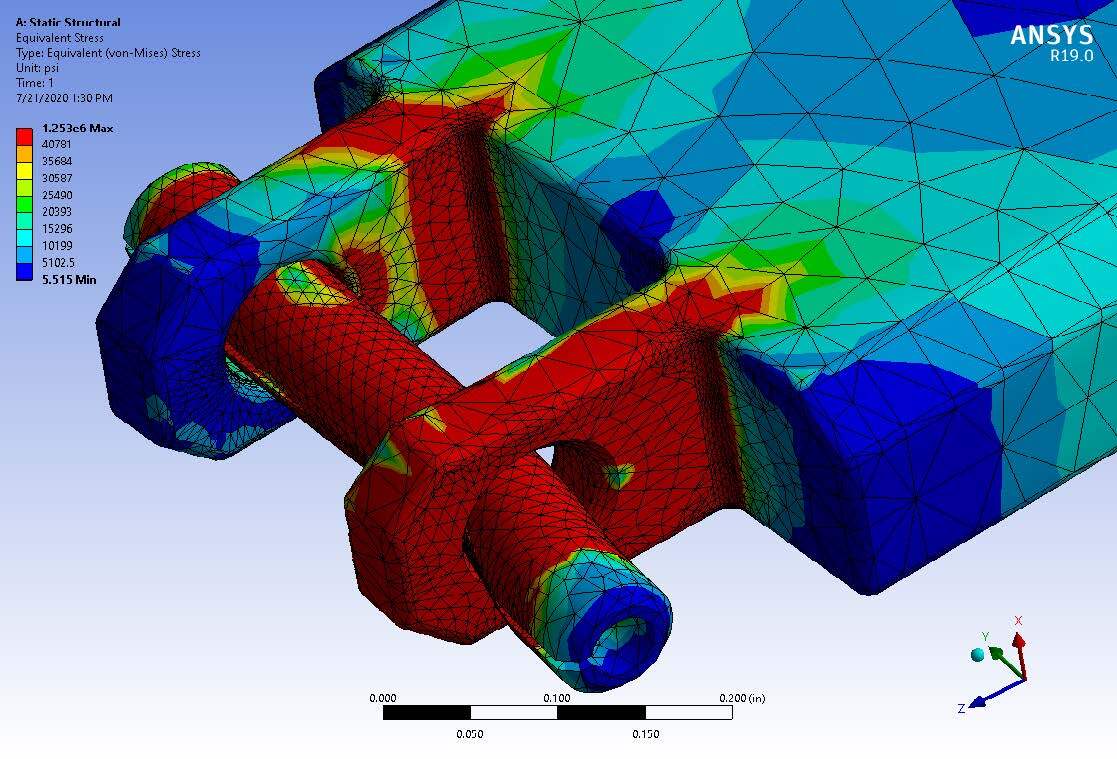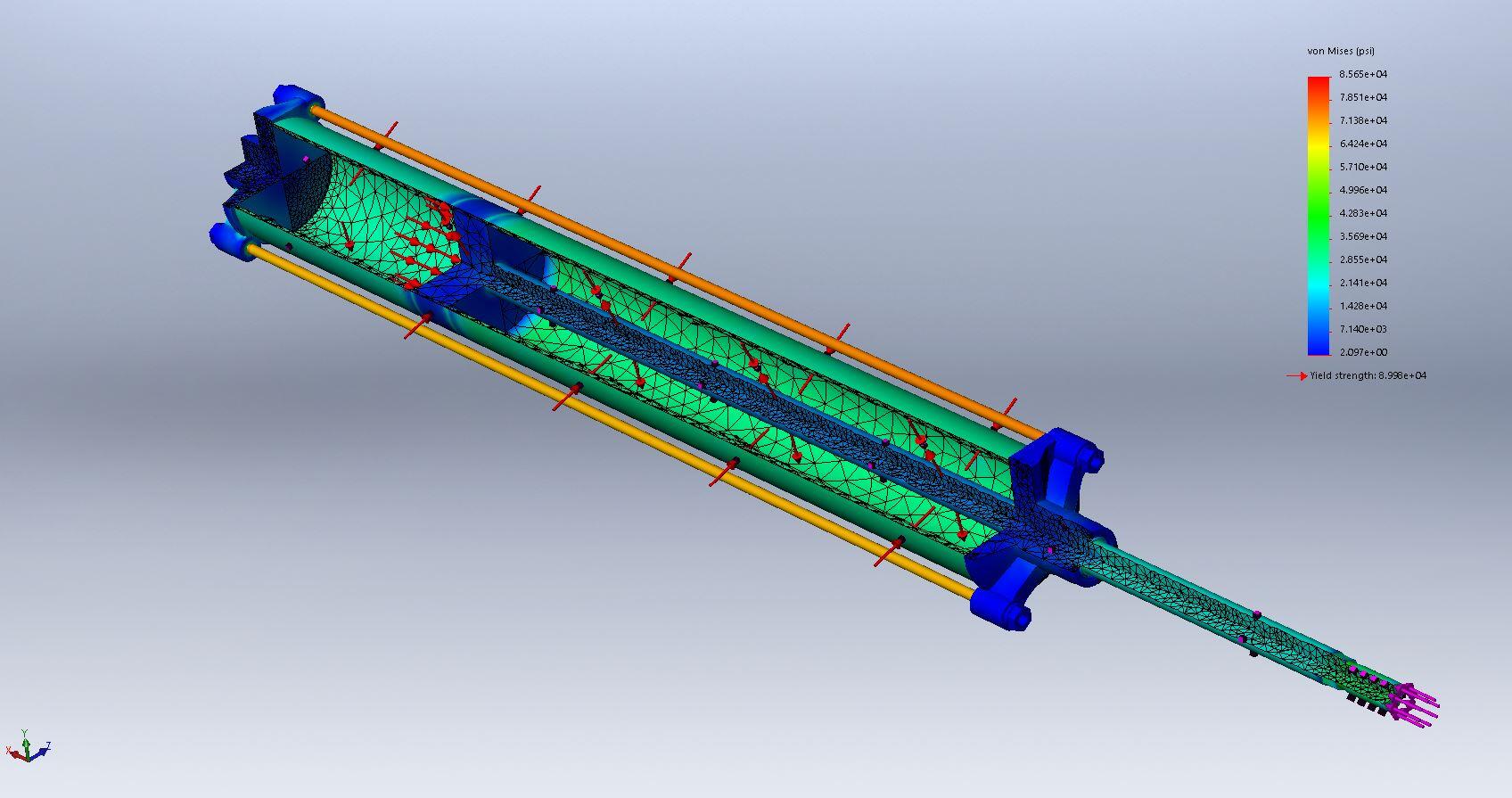
Over the years, engineers have given importance to thermal analysis services in the modern design process. This is due to the usage of higher performance machines on the production floor. That’s why an understanding of temperature distribution and thermal loads becomes vital.
Even though there are various solutions used to solve thermal problems. But most of them all, Finite Element Analysis services (FEA) is commonly used to evaluate thermal factors.
FEA companies prefer evaluating thermal stress as the main purpose of the analysis (or) the boundary conditions are well defined. There are other methods like Computer Fluid Dynamic (CFD) and Fluid-Structure Interaction (FSI).
But CFD is used when estimating flow boundary conditions when the flow (or) structure geometry is complex, and FSI is used for flow simulations, first to give accurate thermal boundary conditions then followed by stress analysis.
FEA companies typically consider factors like structural analysis, heat transfer, fluid flow, mass transport, and electromagnetic potential.
In this article, we want to share an overview of thermal analysis in terms of FEA engineers and companies. Since thermal fea analysis services are all related to heat calculations and for the basics of it. We are considering three types of heat transfers like conduction, convection, and radiation.
Thermal Conduction
In general terms, thermal conduction is the transfer of internal energy of the particles within the body. The internal energy is caused due to the collisions and movement of particles. Thermal fea analysis services consider this internal energy as the main factor for heat flow.
To evaluate conduction for a given material, we have to check the temperature differential across its components. Usually, heat flows from hot regions to cold regions. This transfer of heat accounts for internal energy and thermal conductivity.
From the perspective of FEA consulting services, both the material’s dimensions and temperature differential matter a lot.
For example, a rod of radius 0.8 m with a temperature differential of 400°C can produce double heat flow than a rod with a radius of 0.4 m in a similar temperature differential.
Thus, it’s obvious that material dimensions/size matters, and thermal conduction also depends on the material property. Like highly conductive materials such as copper can produce more conduction where low conductivity materials such as ceramics generate less conduction.
Convective Heat Transfer
In major thermal analysis services, convection is understood as the transfer of heat from one place to another by the movement of fluids. It is also termed as ‘Convective heat transfer.’
During convection, the warmer fluids on the surface get replaced with cooler fluids. This movement of fluids creates complicated mechanisms, and boundary layers at the surface are permitted to local thermal transfer by conduction.
For thermal analysis in FEA simulation, convection can be described by a global convective coefficient (or) by a local differential method on the fluid boundaries where the normal gradient of the fluid-temperature field and fluid conductivity are analyzed.
Here, the fluid movement that causes heat transfer depends upon the temperature difference between the surface areas and the free fluid. Usually, convective heat transfers are said to happen in two scenarios. One is where the fluid is stationary, and another one where the fluid is in motion.
For fluid in no motion, there is a possibility of an external force on the surface, such as gravity. This is called free convection. Here the analysis gets complicated where the external forces are a factor, and free strain temperature is measured.
Thermal Radiation
When thermal motion between the particles within a body generates electromagnetic radiation, it is called thermal radiation. Hence in thermal analysis services, a matter with a temperature greater than absolute zero can emit thermal radiation.
Here the particles on the surface are accountable for radiation, and to cause this movement, there doesn’t need to be a medium to pass through. Thus, radiation can even occur in a vacuum.
The whole concept of thermal radiation revolves around emitting radiation by adsorbing from the adjacent surfaces. Thus, it leaves emission and absorption as the two core properties.
But the cooling and heating of surfaces that contribute to radiation depends upon factors like: –
- Relative temperatures of each surface
- Surface emission capability
- Surface absorption capability
- Angles at which the particles on the surface start their motion
In most of the FEA companies, the thermal radiation of all surfaces in the analysis must be defined with accurate emissivity, view factors, and ambient conditions during thermal analysis. Many times, this can translate into a rather involved process that could lead to a reduction in workflow efficiency.
Note: For arbitrary surfaces, it’s difficult to track thermal radiations and this increases the complexity due to the unavailability of empirical solutions.
For FEA consultation services, thermal analysis is easy to set up. But due to some factors like complex material properties and external forces, accuracy can be tougher to achieve.
While thermal analysis services focus on materials with different characteristics to come up with different analytical solutions, like: –
- For linear analysis solutions, a material’s thermal properties remain constant with no thermal radiation of the surface.
- For nonlinear analysis solutions, thermal properties will vary with temperature. Mostly, boundary conditions and loading capabilities are affected by the temperature, and the presence of radiation causes a nonlinear solution.
- For steady-state analysis, the thermal movement of the particles is stabilized, and the temperature is equally distributed. In such a scenario, an energy balance approach can help us proceed with the analysis.
- For transient analysis, the solutions keep on changing with thermal loading and boundary conditions. Thus, here the initial conditions are calculated for the analysis.
Thermal analysis needs to be done by a skilled (or) a knowledgeable engineer. There are many advantages of carrying out thermal analysis via FEA simulation, which can result in reducing development time and cost, avoiding any design changes, tackling any thermal challenges during the design stage, choosing the right material, and more.
FEA’s thermal analysis is a robust way to evaluate heat conditions and helps engineers develop better, sustainable, and profitable product designs for a material.






